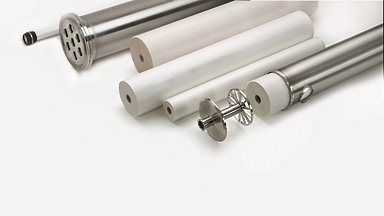Maximise value and quality in milk-based products
Membrane filtration allows milk to be fractionated into its constituent components, which can then can be used to produce a wide spectrum of products. Membrane filtration is also effective at removing bacteria and spores, and is frequently used to standardise protein and casein content.
Additionally, milk producers deploy membrane filtration to concentrate their product into a smaller volume, thereby saving costs during transportation.
Premium milk with natural taste and extended shelf life
Our bactocatch solution removes 99,9999% of bacteria and spores in milk, using a ceramic membrane filtration unit and HTT (high-temperature treatment) of cream. You can use the unit for efficient removal of bacteria and spores in chilled milk and in cheese milk to obtain premium quality end products.
Premium milk with natural taste and extended shelf life
Our bactocatch solution removes 99,9999% of bacteria and spores in milk, using a ceramic membrane filtration unit and HTT (high-temperature treatment) of cream. You can use the unit for efficient removal of bacteria and spores in chilled milk and in cheese milk to obtain premium quality end products.
Uses and technologies

WHEY AND KEY COMPONENT SEPARATION
WPI, lactose and more

Initial concentration
Reverse osmosis

Ion and mineral removal
Nanofiltration

Fat and protein separation
Ultrafiltration

Skim milk processing









